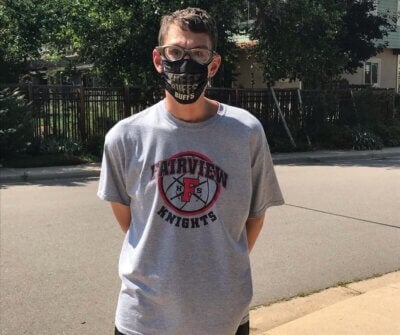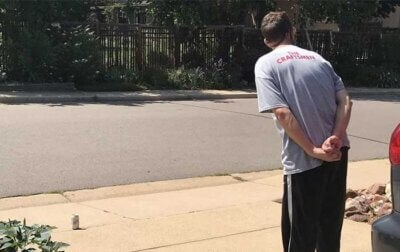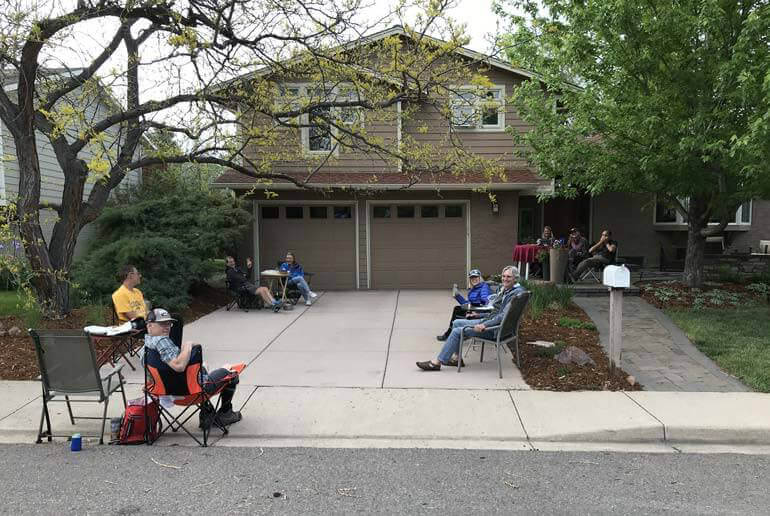By Jayne Dixon Weber
“Ian, what day is it? Tuesday or Wednesday?”
“It’s Wednesday mom, you have your call with Dan today.”
“Oh, that’s right. Thanks for reminding me. Thanks for keeping track of what I have each day.”
 What else do I have today? I don’t know, I can’t remember, I have to look at my calendar, as the days all run together. I know it’s August, but where did the last four months go? Since the boys — my husband and my son Ian — are both home all day, I find myself getting up earlier and earlier in the morning just to have a few minutes of peace and quiet to myself. The only thing different I’ve noticed is that the sun comes up later now than it did a month ago.
What else do I have today? I don’t know, I can’t remember, I have to look at my calendar, as the days all run together. I know it’s August, but where did the last four months go? Since the boys — my husband and my son Ian — are both home all day, I find myself getting up earlier and earlier in the morning just to have a few minutes of peace and quiet to myself. The only thing different I’ve noticed is that the sun comes up later now than it did a month ago.
I thought I would take this time to reflect and see the pandemic from Ian’s eyes. He is and has been home, and he mostly likes that, but . . .
His mother (yes, me) pulled him out of work. He works at a grocery store and four months ago we had no idea what we were dealing with. Now we do and I’m glad we did take him out of work. But then the cancellations started:
CANCELED
End-of-season basketball banquet
CANCELED
Spring soccer and track activities
CANCELED
Summer softball league
CANCELED
His birthday party and ride-along at the fire station
CANCELED
The Fourth of July neighborhood festivities that have been a part of our life for the last 25 years
CANCELED
The trip to Orlando for the NFXF international conference (Hello virtual conference!)
Everything in Ian’s life has been cancelled. Everything. It is not just one event and they are not minor events in his life. They mean everything to him. Canceled. And there’s nothing to look forward to. NOTHING.
So, What Have We Been Doing?
Each day we set the daily schedule for Ian, trying to infuse “something” fun or interesting or different to do. And four months into this COVID-19, it becomes harder and harder.
We’ve started alternating our errands between Target, Home Depot, and the grocery store. Every now and then, to shake things up a bit, we throw in a trip to Costco. We go first thing in the morning, wear a mask, stay away from people, and get in and out as fast as we can. Almost clandestine in nature. And this is only possible because Ian has gotten used to wearing a mask. Thank goodness, as masks may be a part of our lives for a long time.
 The rest of the day? Ian spends his days on the front porch swing, waiting for the UPS guy, the FedEx guy, and the mail carrier to drive by. He leaves a soda on the driveway for the drivers. This is what he looks forward to, most every day. The bonus is when I order an item (or five) to be delivered, I get an email that gives me a three-hour window when the item will be delivered. Guess who’s out there for three hours waiting? With his soda sitting on the driveway.
The rest of the day? Ian spends his days on the front porch swing, waiting for the UPS guy, the FedEx guy, and the mail carrier to drive by. He leaves a soda on the driveway for the drivers. This is what he looks forward to, most every day. The bonus is when I order an item (or five) to be delivered, I get an email that gives me a three-hour window when the item will be delivered. Guess who’s out there for three hours waiting? With his soda sitting on the driveway.
In the evening — if you haven’t heard, the people in south Boulder howl every night at 8 PM in honor of the first responders. It’s become part of our nightly routine; I don’t know if it’s good or bad that we can now tell which neighbor is howling, based on their howl. Ian has never howled, but he does like to listen to it.
We started a biweekly social distancing dinner with three other neighbors – yes, we stay more than six feet apart so we can eat without masks! Last week we played badminton in the street. We have thrown out the rules for not playing in the street, though we did put up orange cones to block off the street. (When’s the last time you played badminton?)

 Ian’s letting his sister cut his hair. Thank goodness. 😉
Ian’s letting his sister cut his hair. Thank goodness. 😉
I need to come up with new ideas for Ian, and guess what? I need them too.
We’re in uncharted water here. What can we do to take care of ourselves, and what can we do to help others? It’s that combination that — I think — will help us get through this time.
A Quick Survey
We’ve put together a short survey about what’s working for you, what you could use right now, and what you think you might need over the next few months.
While we’d like to be able to offer you free childcare or guarantee a safe return to school, we can do the next best thing — provide ideas and create resources based on your feedback.
NOTE: The survey asks: Which of the following have been helpful to you? To re-familiarize yourself with the articles/webinars listed, we’ve added them here below.
A Message to the Fragile X Community
By NFXF Executive Director Linda Sorensen
A COVID-19 Social Story from NFXF
“What is COVID-19 and What Does It Mean to Me?”
Supporting Your Child with Fragile X Syndrome During Special Times
A Webinar With Barbara Haas-Givler
The Unregulated Life of COVID-19 is No Laughing Matter
A Webinar With Tracy Stackhouse
Mindfulness and Me
A Webinar With Tracy Stackhouse & Ruth Meissner
How To’s of Sensory Diets in Fragile X Syndrome
A Webinar With Tracy Stackhouse
How Do We Cope with the Current Circumstances
A Webinar With Dr. Marcia Braden
How to Help Your Child Cope with COVID-19
By Dr. Marcia Braden
How to Prepare for a Telehealth Visit
A Webinar With Drs. Rebecca Shaffer and Ernest Pedapati
My Child is Home… Now What?? Managing Behavior
A Webinar With Dr. Rebecca Shaffer
My Child is Home… Now What?? Keeping a Routine
A Webinar With Dr. Rebecca Shaffer
COVID-19: My child is home from school or work or a day program! What do I do?
By Jayne Dixon Weber
I’ve had many things canceled too, but I can (kind of) see the big picture, I can be hopeful that this too shall pass — though I’m beginning to look forward to the mail carrier every day too. Send a letter to someone you love; it could make their day.
Stay well.
—Jayne
jayne@fragilex.org
about

Jayne Dixon Weber
Jayne served as the NFXF director of community education (and other positions over the years) from 2007 to 2023. She has two adult children, a son with Fragile X syndrome and a daughter. Jayne is the author of Transitioning ‘Special’ Children into Elementary School, co-author of Fragile X Fred, and editor of Children with Fragile X Syndrome: A Parents’ Guide. Jayne likes to read, enjoys photography, and goes for a walk every day.
MORE COVID-19 RESOURCES
My Child is Home… Now What?? Play Skills
In this webinar, Rebecca Shaffer guides us through some pointers about how to build play skills while your children are at home, and some great resources for thinking through different play opportunities while they’re at home.
When Disappearing Acts Are a Good Thing
Behavior can often be misunderstood and punished because the parent or caregiver doesn’t recognize its function for the child. Caregivers must look behind the behavior to learn what they’re trying to communicate.
My Child Is Home… Now What? Managing Behavior
In this webinar, Rebecca Shaffer walks us through what your child is telling you, strategies to prevent the behavior, reinforcing good behaviors, and building new skills.
How to Help Your Child Cope with COVID-19
Dr. Marcia Braden provides tips and resources, including social story and visual schedule templates, to help you and your children during the COVID-19 pandemic.


